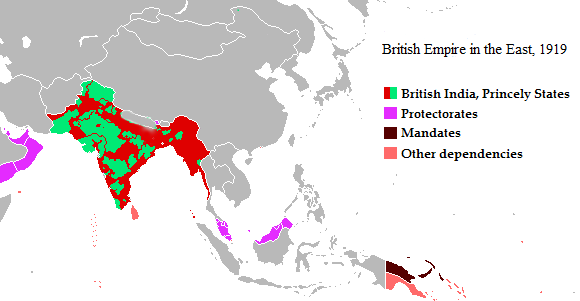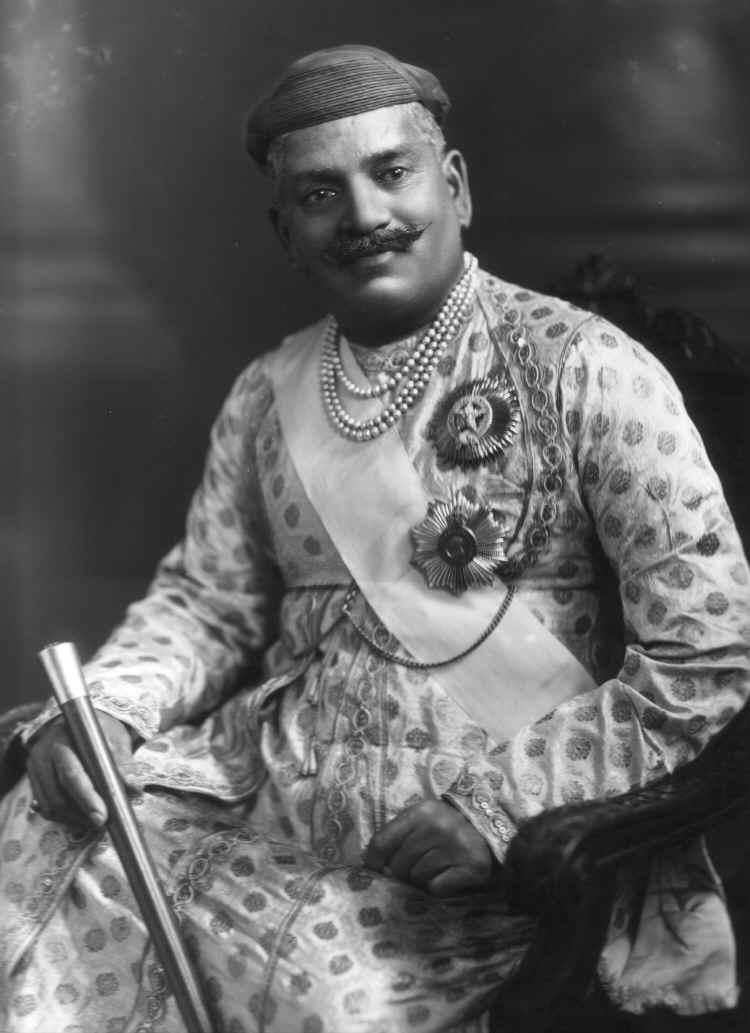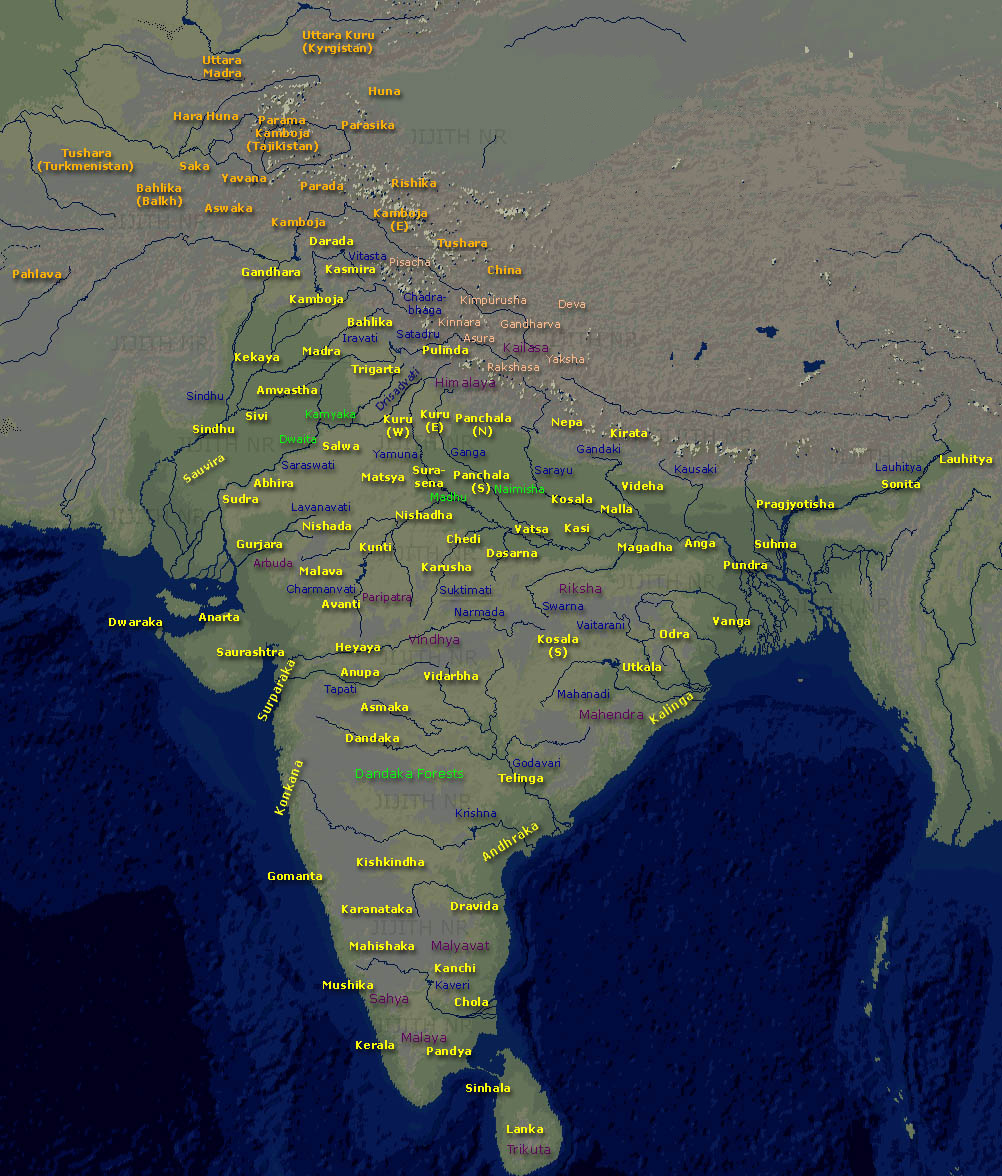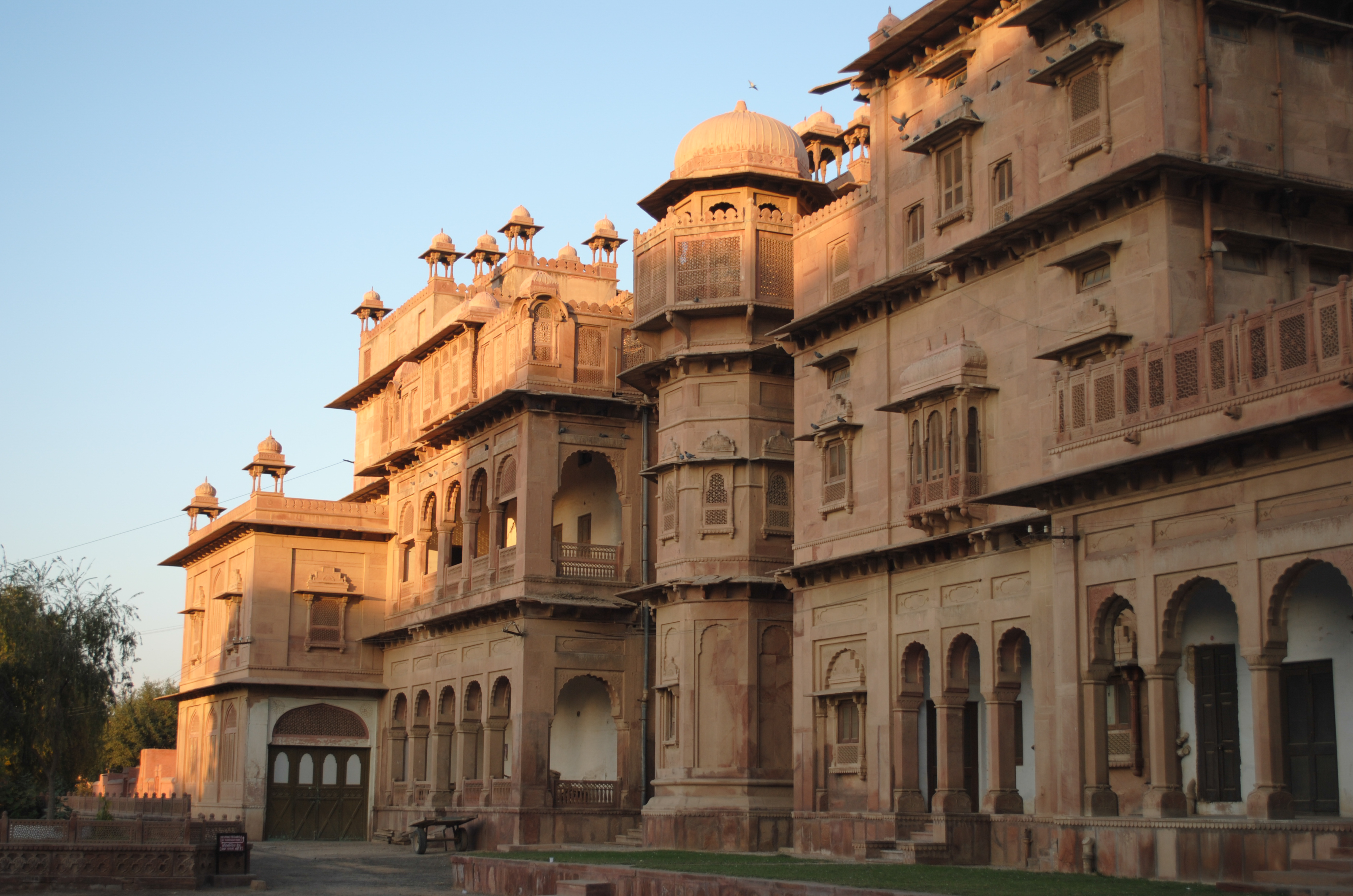|
Rajpara State (Gohelwar)
Rajpara is a village and former non- salute Rajput princely state on Saurashtra peninsula in Gujarat, western India. History The petty princely state, in Gohelwar ''prant'', was ruled by Sarvaiya Rajput Chieftains. In 1901 it comprised a single village, with a population of 552, yielding 2,150 Rupees state revenue (1903-4, nearly all from land), paying 274 Rupees tribute, to the Gaikwar Baroda State and Junagadh State. See also * Rajpara State (Halar) Rajpara (originally Rajpura) is a village and former Hindu non-salute state, salute Rajput princely state (native state) on Saurashtra (region), Saurashtra peninsula in Gujarat, western India. History The Fifth Class Non-Salute Princely stat ... References Princely states of Gujarat {{India-hist-stub ... [...More Info...] [...Related Items...] OR: [Wikipedia] [Google] [Baidu] |
Salute State
A salute state was a princely state under the British Raj that had been granted a gun salute by the British Crown (as paramount ruler); i.e., the protocolary privilege for its ruler to be greeted—originally by Royal Navy ships, later also on land—with a number of cannon shots, in graduations of two salutes from three to 21, as recognition of the state's relative status. The gun-salute system of recognition was first instituted during the time of the East India Company in the late 18th century and was continued under direct Crown rule from 1858. As with the other princely states, the salute states varied greatly in size and importance. The states of Hyderabad and Jammu and Kashmir, both with a 21-gun salute, were each over 200,000 km2 in size, or slightly larger than the whole of Great Britain; in 1941, Hyderabad had a population of over 16,000,000, comparable to the population of Romania at the time, while Jammu and Kashmir had a population of slightly over 4 million ... [...More Info...] [...Related Items...] OR: [Wikipedia] [Google] [Baidu] |
Princely State
A princely state (also called native state or Indian state) was a nominally sovereign entity of the British Indian Empire that was not directly governed by the British, but rather by an Indian ruler under a form of indirect rule, subject to a subsidiary alliance and the suzerainty or paramountcy of the British crown. There were officially 565 princely states when India and Pakistan became independent in 1947, but the great majority had contracted with the viceroy to provide public services and tax collection. Only 21 had actual state governments, and only four were large ( Hyderabad State, Mysore State, Jammu and Kashmir State, and Baroda State). They acceded to one of the two new independent nations between 1947 and 1949. All the princes were eventually pensioned off. At the time of the British withdrawal, 565 princely states were officially recognised in the Indian subcontinent, apart from thousands of zamindari estates and jagirs. In 1947, princely states covered ... [...More Info...] [...Related Items...] OR: [Wikipedia] [Google] [Baidu] |
Saurashtra (region)
Saurashtra, also known as Sorath or Kathiawar, is a peninsular region of Gujarat, India, located on the Arabian Sea coast. It covers about a third of Gujarat state, notably 11 districts of Gujarat, including Rajkot District. It was formerly a state of India before it merged with Bombay state. In 1961 it separated from Bombay and joined Gujarat. Location Saurashtra peninsula is bound on the south and south-west by the Arabian sea, on the north-west by the Gulf of Kutch and on the east by the Gulf of Khambhat. From the apex of these two gulfs, the Little Rann of Kutch and Khambhat, waste tracts half salt morass half sandy desert, stretch inland towards each other and complete the isolation of Kathiawar, except one narrow neck which connects it on the north-east with the mainland of Gujarat. The peninsula is sometimes referred to as Kathiawar after the Kathi Darbar, which once ruled most of the region. However, Saurashtra is not entirely synonymous with Kathiawar, since a ... [...More Info...] [...Related Items...] OR: [Wikipedia] [Google] [Baidu] |
Gujarat
Gujarat (, ) is a state along the western coast of India. Its coastline of about is the longest in the country, most of which lies on the Kathiawar peninsula. Gujarat is the fifth-largest Indian state by area, covering some ; and the ninth-most populous state, with a population of 60.4 million. It is bordered by Rajasthan to the northeast, Dadra and Nagar Haveli and Daman and Diu to the south, Maharashtra to the southeast, Madhya Pradesh to the east, and the Arabian Sea and the Pakistani province of Sindh to the west. Gujarat's capital city is Gandhinagar, while its largest city is Ahmedabad. The Gujaratis are indigenous to the state and their language, Gujarati, is the state's official language. The state encompasses 23 sites of the ancient Indus Valley civilisation (more than any other state). The most important sites are Lothal (the world's first dry dock), Dholavira (the fifth largest site), and Gola Dhoro (where 5 uncommon seals were found). Lothal ... [...More Info...] [...Related Items...] OR: [Wikipedia] [Google] [Baidu] |
India
India, officially the Republic of India ( Hindi: ), is a country in South Asia. It is the seventh-largest country by area, the second-most populous country, and the most populous democracy in the world. Bounded by the Indian Ocean on the south, the Arabian Sea on the southwest, and the Bay of Bengal on the southeast, it shares land borders with Pakistan to the west; China, Nepal, and Bhutan to the north; and Bangladesh and Myanmar to the east. In the Indian Ocean, India is in the vicinity of Sri Lanka and the Maldives; its Andaman and Nicobar Islands share a maritime border with Thailand, Myanmar, and Indonesia. Modern humans arrived on the Indian subcontinent from Africa no later than 55,000 years ago., "Y-Chromosome and Mt-DNA data support the colonization of South Asia by modern humans originating in Africa. ... Coalescence dates for most non-European populations average to between 73–55 ka.", "Modern human beings—''Homo sapiens''—originated in Africa. Th ... [...More Info...] [...Related Items...] OR: [Wikipedia] [Google] [Baidu] |
Gohelwar
Gohelwar was one of the four '' prant''s or traditional provinces of Saurashtra, the others being Jhalawar or Jhalavad, Halar, and Sorath. Gohelwar covered the southeast of the Kathiawar peninsula, and roughly corresponds to the modern Bhavnagar District and Amreli District. Princely states Its salute states were : *First Class: Bhavnagar (entitled to a hereditary 13-guns salute and a 15-guns local salute, with the King titled Maharaja) *Second Class: Palitana (entitled to a hereditary 9-guns salute, with the King titled Thakur Sahib) The major non-salute states included: *Third Class: Jasdan, Vala *Fourth Class: Lathi *Fifth Class: none *Sixth Class: Bhadli, Itaria, Kotra Pitha, Limbda, Vankia *Seventh Class: Kariana Kariana is a small village in Amreli district in the state of Gujarat, India. It is on the road from Babra to Gadhda. You can also visit Ghela Somnath temple distance 15 from the Kariyana. Description This village has many peacocks and there ... ... [...More Info...] [...Related Items...] OR: [Wikipedia] [Google] [Baidu] |
Prant
A prant is a historical district in India, and a native British Raj age term for a colonial district. The same name can thus have different meanings depending on the period. Pre-colonial Some prants are traditional names for parts of historical regions, such as the original ten regions of Kathiawad on Saurashtra peninsula in Gujarat: Jhalawar in the north, Machhukantha west of it, Halar in the northwest, Okhamandal in the extreme west (controlled by Baroda), Barda of Jethwar along the southwest coast, Sorath (a Muslim corruption of Saurashtra) in the south, Babriawar in the hilly southeast, Kathiawar proper (large and central), Undsarviya along Shetrunji river and then finally Gohelwad, along the eastern Cambay coast and comminated by Gohel Rajputs. Colonial British During the British raj, the term is often applied to the colonial Districts of British India. Thus the colonial agency exercising indirect rule over the princely states in Kathiawar on Saurashtra peninsula in ... [...More Info...] [...Related Items...] OR: [Wikipedia] [Google] [Baidu] |
Rajput
Rajput (from Sanskrit ''raja-putra'' 'son of a king') is a large multi-component cluster of castes, kin bodies, and local groups, sharing social status and ideology of genealogical descent originating from the Indian subcontinent. The term Rajput covers various patrilineal clans historically associated with warriorhood: several clans claim Rajput status, although not all claims are universally accepted. According to modern scholars, almost all Rajput clans originated from peasant or pastoral communities. Over time, the Rajputs emerged as a social class comprising people from a variety of ethnic and geographical backgrounds. During the 16th and 17th centuries, the membership of this class became largely hereditary, although new claims to Rajput status continued to be made in the later centuries. Several Rajput-ruled kingdoms played a significant role in many regions of central and northern India from seventh century onwards. The Rajput population and the former Rajput state ... [...More Info...] [...Related Items...] OR: [Wikipedia] [Google] [Baidu] |
Baroda State
Baroda State was a state in present-day Gujarat, ruled by the Gaekwad dynasty of the Maratha Confederacy from its formation in 1721 until its Instrument of Accession, accession to the newly formed Dominion of India in 1949. With the city of Baroda (Vadodara) as its capital, during the British Raj its relations with the British were managed by the Baroda Residency. The revenue of the state in 1901 was Rs. 13,661,000. Baroda formally acceded to the Dominion of India, on 1 May 1949, prior to which an interim government was formed in the state. History Early history Baroda derives its native name ''Vadodara'' from the Sanskrit word ''vatodara'', meaning 'in the heart of the Banyan (''Vata'') tree. It also has another name, ''Virakshetra'' or ''Virawati'' (land of warriors), mentioned alongside ''Vadodara'' by the 17th century Gujarati poet Premanand Bhatt, native to the city. Its name has been mentioned as ''Brodera'' by early English travellers and merchants, from which its ... [...More Info...] [...Related Items...] OR: [Wikipedia] [Google] [Baidu] |
Junagadh State
Junagarh or Junagadh ( ur, ) was a princely state in Gujarat ruled by the Muslim Babi dynasty in British India, until its integration into the Union of India in 1948. History Muhammad Sher Khan Babai was the founder of the Babi Pashtun dynasty of Junagarh in 1654. His descendants, the Babi Nawabs of Junagarh, conquered large territories in southern Saurashtra. However, during the collapse of the Mughal Empire, the Babis became involved in a struggle with the Gaekwad dynasty of the Maratha Empire over control of Gujarat during the reign of the local Mohammad Mahabat Khanji I. Mohammad Khan Bahadur Khanji I declared independence from the Mughal governor of Gujarat subah, and founded the state of Junagarh in 1730. This allowed the Babi to retain sovereignty of Junagarh and other princely states. During the reign of his heir Junagarh was a tributary to the Maratha Empire, until it came under British suzerainty in 1807 under Mohammad Hamid Khanji I, following the Second Ang ... [...More Info...] [...Related Items...] OR: [Wikipedia] [Google] [Baidu] |
Rajpara State (Halar)
Rajpara (originally Rajpura) is a village and former Hindu non- salute Rajput princely state (native state) on Saurashtra peninsula in Gujarat, western India. History The Fifth Class Non-Salute Princely state and taluka, in Halar ''prant'', was ruled by Jadeja Rajput Chieftains by primogeniture. It is an offshoot of the Kotda-Sangani State, whose first Thakur (title) Togujiraj, the founder of the house, the second son of Sangoji of Kotda-Sangani, received in appanage (jagir) with some other villages. In 1901 it comprised twelve more villages, covering 39 square kilometers, with a combined population of 1,862 in 1901 (2,268 in 1921), yielding 13,654 Rupees state revenue (1903-4, mostly from land; later 27,000 Rs), paying 3,163 Rupees tribute, to the British and Junagadh State. The Rajpura housed one of the most elegant houses in its time, the royal house, Rangmahel, having a scenic landscape surrounding itself, also served as the administrative office of the Taluk ... [...More Info...] [...Related Items...] OR: [Wikipedia] [Google] [Baidu] |






